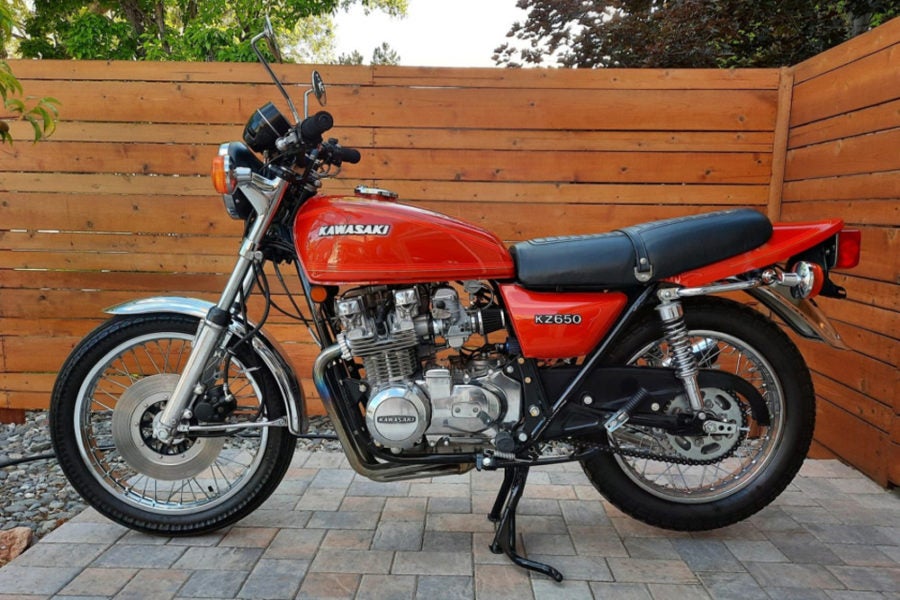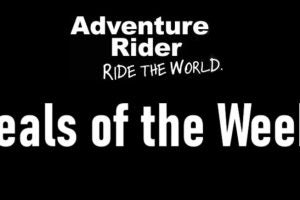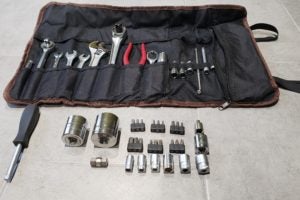The big four-cylinder ’70s-era Japanese superbikes get all the respect, followed by the two-strokes. But, as we’ve said on here before, the middleweights were often a better choice—bikes like the Honda CB550, the Yamaha XS650, or the Kawasaki KZ650.
The KZ650 might be the best bargain of the lot. Except for the KZ fan club, nobody really pays much attention to them, and they’re still available at sane prices. And, in many ways, they have many of the same good points as the Z1 900, Kawi’s flagship of that era. There were also some important differences, especially inside the engine.
Thoroughbred ancestry
From a few steps back, the KZ650 looks a lot like Kawasaki’s bigger 900 cc machines of the ’70s. For good reason, too; the Z1 900 and the KZ650 were both designed by Ben Inamura. The 650 has the same straight seat, tail plastics, chrome fenders, single front brake disc, dual coilover shocks and of course, a proper air-cooled DOHC four-cylinder engine with kickstarter augmenting the electric boot.
If you dig inside that four-cylinder engine, there are some major differences. Obviously, the 650 has less capacity (652 cc vs 903 cc). The 650 has plain bearings on the crankshaft, instead of roller bearings, which the 900 used. For a primary drive, the 650 had a Hy-Vo chain running from crankshaft to clutch input shaft; the 900 instead used a direct gear drive.

The engine was similar externally to the Z1 900 four-cyl mill, but had some internal differences beyond the displacement disparity. Photo: Bring a Trailer
Generally speaking, as far as ’70s aircooled engines go, Japanese designs with roller bearings have better reputations than plain bearings. And, Hy-Vo chains work just fine (in fact, they smooth out the driveline, one advantage the 650 had over the 900). However, if/when you need to replace them, it’s a pain in the neck. In the case of the 650, it required a Doctorate in Engine Surgery to perform this procedure.
However, if you rode the engine within its parameters, the 650 was fine, and when I was in my UJM Phase as a dirt-poor university student, they were pretty easy to find on the used market, 25 years after their introduction. Back then, the keeners called them The Prince of Superbikes, implying it was the son of the Z1 900 series, which I presume they had titled the King of Sportbikes.
How much power did this so-called Prince really hold? Stock, the KZ650 supposedly made 64 horsepower at the crank, with 41 pound-feet of torque. That’s more than enough for legal highway speeds all across North America, and a bit of fun left over. A wet weight around 220 kg meant it wasn’t exactly light, but it wasn’t unbearably heavy either. The middleweight formula of moderate horsepower, easily-manageable weight worked as well in 1976 as it does now.
However, like many older Japanese bikes, it’s possible to modify these bikes for a considerable boost in horsepower. Some owners big-bore or even bore-and-stroke their 650s, using aftermarket parts or bits off Kawasaki’s four-cylinder 750 engines. Other owners just drop the 750 engines in—I know at least one guy who’s done this, and it doesn’t sound very complicated.

Pretty classic ’70s Kawasaki lines. Photo: Bring a Trailer
It’s easy to see why this would be an attractive idea. Motorcyclists always want more power, and putting in a stronger 750, instead of pushing the 650 beyond its design parameters, makes sense.
There’s nothing wrong with the KZ650 as-issued though. For someone looking for an easy-to-live-with ’70s machine, this might be a sensible place to start. With a single front disc and old-school telescopic forks and coil-over shocks, how fast do you really want to push a bike that’s more than 40 years old?
If you want to learn about the KZ series, the KZRider forum is a great place to start; that’s where I hung out when I owned my old 440 and 750 Kawis. I’m amazed to see it’s still running—it’s even older than the ADVrider forum, which is pretty extreme in Internet years!

Yikes! Those ugly footpegs look like replacements, along with a few other bits on the bike. Photo: Bring a Trailer
What about this bike?
The 1978 machine for sale here on Bring a Trailer is in gorgeous shape … but it is not a restoration, exactly. I’m tempted to call it a resto-mod, but maybe that’s not correct either. Is there a space in between, perhaps?
The owner has replaced the airbox with a set of pod filters. Maybe it was an attempt to save some money, or maybe the plan was to gain performance. Either way, if you’ve got an intense dislike of pod filters, which I do, that’s a major turn-off.
The 4-1 exhaust also appears to be a replacement, and the passenger pegs look like cheap Chinese-made equipment.
Generally, though, this machine appears to be in excellent nick, as you can see in the walkaround above. New paint, with colour-coordinated pinstriping. New tires on rims re-laced with new spokes. Flushed/adjusted brake system. Rebuilt carbs, valves re-set, and engine oil changed. New chain, new sprockets.
If you’ve ever rebuilt a vintage Japanese four-cylinder, you know that you can get into a lot of fussy, time-consuming work, when you bring it up to proper running order. With that in mind, a bike that’s well-sorted (as this seems to be) is worth looking for.

Because it’s a 1978 model, this bike should have a few upgrades over the original ’76 design. Photo: Bring a Trailer
As it’s a ’78 B2 model, this machine should have an updated two-phase charging system (original design had a three-phase system), as well as automatic camchain tensioner (a welcome addition). Suspension saw some changes for that model year as well, and the footpegs were rubber-mounted, which reduced vibration. Some buyers would no doubt want “the original” ’76 model, but a later-production machine comes with its advantages.
At time of writing, the Bring a Trailer auction is at a measly $650, although it’s going to rise far higher in coming days. Still, it’s unlikely to rise as high as a vintage Euro of the same generation, and like I said earlier, KZ650s often sell for reasonably sensible prices. This might be a chance to slide in for a solid machine that’s still affordable.
It’s being sold with a clean Nevada title, and no reserve.







